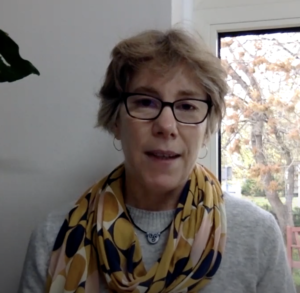by Andrew Mcalister

As coronavirus continues to spread around the globe, millions and millions of us are being asked to stay at home. In an attempt to stop the spread of this virus, we are avoiding public spaces and all non-essential activity.
For many there is a new balance to contend with, one of working from home while the kids are schooled from home. Others now face the reality of no longer having paid work. Some, like doctors, nurses, and those working in child-care and supermarkets, must continue their work despite the risks. Change has happened very quickly. Anxiousness in response to this change is normal and very understandable.
The unknown of this time, along with wall to wall media reports of increasing infection and ongoing projections, can all act to increase anxiety.
How can we look after ourselves at this time? Self-care has never been so important.
Social media and digital connectivity are really coming to the fore. A catch up for coffee, for example, is now done in living rooms, in kitchens, and on balconies via Skype, Zoom, Facetime, and Messenger. Activities like these, of course, are dependent on people being digitally literate and having the necessary data – and this is not everyone. The telephone or a coversation across a balconey can be just as effective.
With extra time on our hands, maybe it’s time to whittle down those book and movie lists, maybe pick up that guitar again. Perhaps the garden could do with some attention, or maybe those odd-jobs around the house we have put off. If we are at home with family and/or friends, there is the opportunity to spend more time with them. Card games, computer games, or sharing food preparation are just some things that can be done together. It’s also important to talk to each other, to share how we are going during this time. For some of us, however, it may not be possible to do these things.
Anxiety is a fear of the future. It is a problem when our thinking and imagining about the future becomes over-active and fixated. The emotion of anxiety then grows to be out of proportion with what is actually happening for us now. In the experience of this kind of anxiety we might lash out, seek escape via some kind of addiction, or maybe just disassociate from the emotion itself.
As we stay home, amid all that is happening, it is important that we stay here, in the moment. It may sound glib, however the practice of staying in the present moment is one of the best things we can do to manage this kind of anxiety. The good news is that anything we do in the moment can be a present moment practice; all we need do is be attentive to whatever we are doing. Attention is the key. If we are doing something, weeding the garden for example, whilst we think about just how bad the coronavirus might get, then chances are we are feeling overly anxious whilst weeding.
What else can we be attentive to and so stay here?
With bare feet, sit in a chair. Spent some time (at least 10 minutes) giving attention to the sensation of your right foot on the floor; then spend another (at least) 10 minutes attending to your left foot. If your attention wanders, when you realise this has happened, re-give attention to the sensation of your foot on the floor.
Sit and breathe deeply and gently from the gut. Give attention to the physical sensation of this breath, in the gut, as you inhale and exhale. At other times attend to the sensation of the air as it passes in and out of your nose. Do each of these, also, for at least 10 minutes.
What is necessary is that we give attention to only one thing, one sensation, at a time. As we do this, our attention grows more finely pointed and more grounded in the here and now.
Perhaps there is a view of a garden, or a plant, or a tree at home. Spend some time with this view. The above picture is the view from my bedroom. Birds will often trot along the terraces looking for food. It is such a wonder to see them. When I notice one come, I stop and look, giving them full attention until they fly away. What we can also do with these views is to choose a leaf or a flower on a plant or a tree and give it our full attention. If the flower is large enough give attention to one of its petals. Simply look, attend, to the one thing you have chosen.
All of this may sound quite boring. However, over time the effect is to ground attention in the stuff of now rather than in thoughts and imaginings of future or past. This practice can become quite calming and relaxing.
We can also practice this way of attention with each other as we meet for online coffee or do something else with the people we are with. The experience of what we are doing together can be, in itself, a help for over anxiousness; it’s an event happening now. There is also a myriad of things happening within the event itself that we can give attention to: tea as it is poured, the heart on a playing card as it is placed on a table, the eye of a friend as we talk.
We could also attend to the weed in our hand as it is pulled, the laughing (or crying) of a child, the cat’s breathing as it sleeps, a fish in the aquarium as it swims. Opportunities to be attentive in the now are everywhere. All we need do is see them, accept the value of this practice, and give sustained, gentle attention to something, someone – now.
Anxiety also reduces as we practice meditation. During mantra meditation, for example, the giving and re-giving of attention to the mantra acts as a way of exercising attention, training it in the discipline of a clear focus, in the moment, on one thing – the mantra. This exercising of attention that is meditation then helps with the maintenance of attention on other things, whatever they might be at any one time – the foot, the breath, the weed, the bird, the leaf, the flower, etc.
During this time, practice giving attention to one ordinary thing at a time.
Originally published at Lines From Inbetween by Andrew McAlister
Meditatio, the outreach of WCCM to many professions and fields of life, has a range of resources on Religion and Spirituality.



